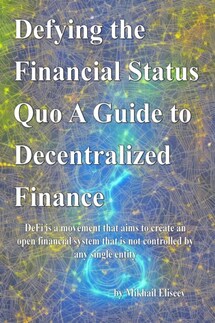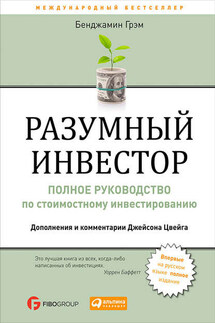A Beginner's Guide to Digital Currencies and the Blockchain - страница 12
Another possibility is the integration of blockchain technology into various industries, such as supply chain management and voting systems. This could lead to more efficient and secure processes in these industries, as well as the creation of new business models and opportunities.
Cryptocurrencies and blockchain technology are still in the early stages of development, and it remains to be seen how they will evolve in the future. However, it is clear that these technologies have the potential to fundamentally change the way we think about money and financial transactions.
As an investor, it is important to approach cryptocurrencies with caution and do your due diligence before committing any money. However, for those who are willing to take on the risks, the potential rewards of investing in cryptocurrencies can be significant.
By understanding the basics of cryptocurrencies and blockchain technology, and taking a careful and disciplined approach to investment, you can position yourself to capitalize on the opportunities presented by this exciting new asset class.
Chapter 7: Common Misconceptions About Cryptocurrencies
Despite the growing popularity of cryptocurrencies, there are still many misconceptions about how they work and their potential uses. Here are a few of the most common misconceptions:
Cryptocurrencies are only used for illegal activities: While it is true that some cryptocurrencies, such as Monero, have gained a reputation for being used in illegal activities due to their privacy-focused features, this is not true of all cryptocurrencies. In fact, many cryptocurrencies, such as Bitcoin and Ethereum, are widely used for legitimate purposes and have been adopted by mainstream businesses and financial institutions.
Cryptocurrencies are not real money: While cryptocurrencies are not physical, fiat currencies, they can still be used as a means of exchange and store of value. In fact, some countries, such as Sweden and Denmark, are exploring the possibility of replacing their traditional currencies with digital ones.
Cryptocurrencies are too risky to invest in: While it is true that cryptocurrencies are a relatively new and volatile asset class, they can still be a viable investment for those who are willing to take on the risks. It is important to carefully research and evaluate any investment, including cryptocurrencies, before committing any money.
Cryptocurrencies are not regulated: While cryptocurrencies are not subject to the same levels of regulation as traditional assets, they are not completely unregulated. In many countries, there are laws and regulations in place to protect investors and prevent fraud and money laundering.
Chapter 8: Cryptocurrency Scams and How to Avoid Them
Unfortunately, the lack of regulation and transparency in the cryptocurrency market has made it a target for scams and fraud. Here are a few common scams to be aware of and how to protect yourself:
Ponzi schemes: A Ponzi scheme is a fraudulent investment scheme in which returns are paid to earlier investors using the investments of newer investors. These schemes often promise high returns with little or no risk, but eventually collapse when the pool of new investors dries up.
Phishing attacks: A phishing attack is a type of cybercrime in which a scammer poses as a legitimate entity in order to trick victims into giving away sensitive information, such as login credentials or financial information.







